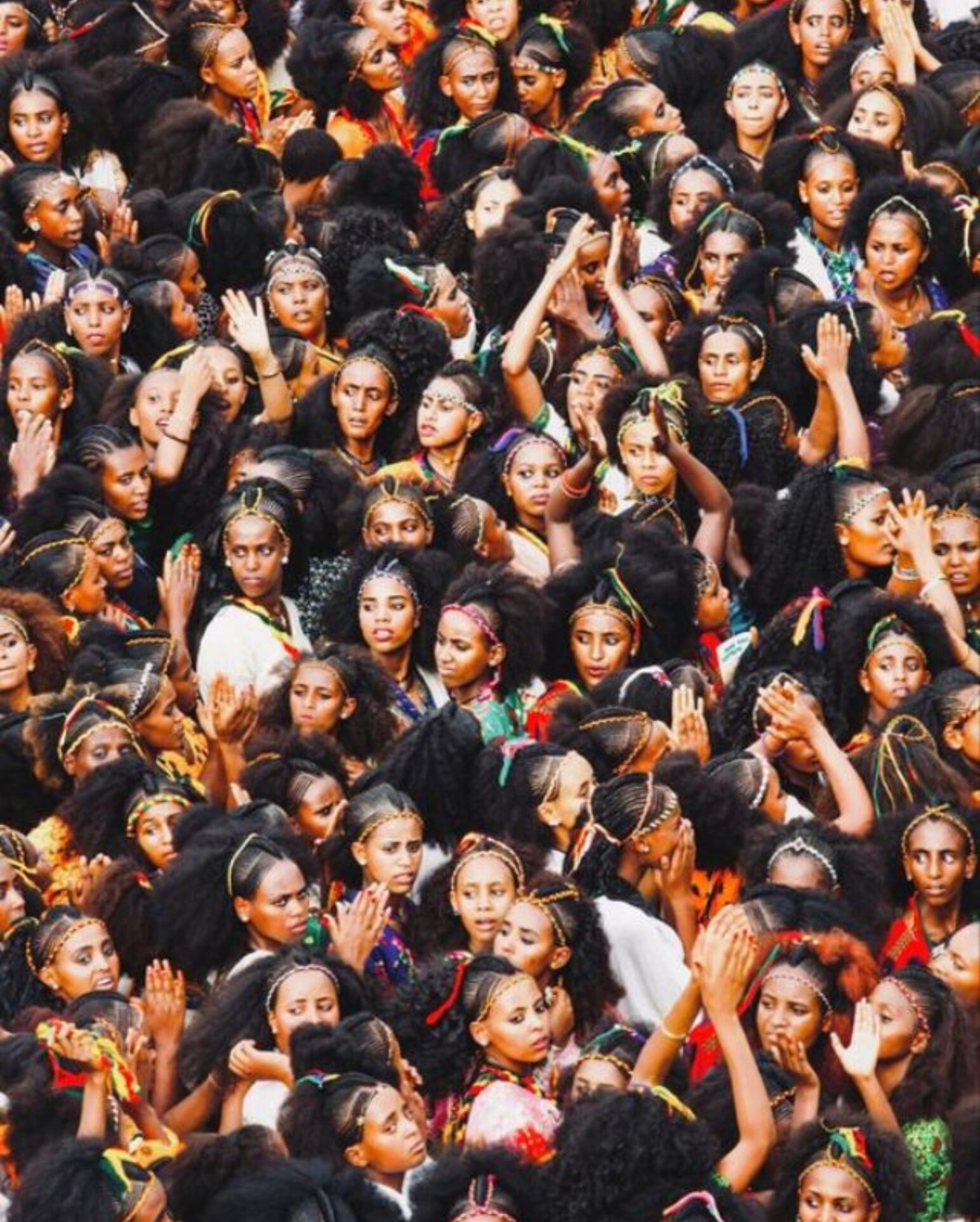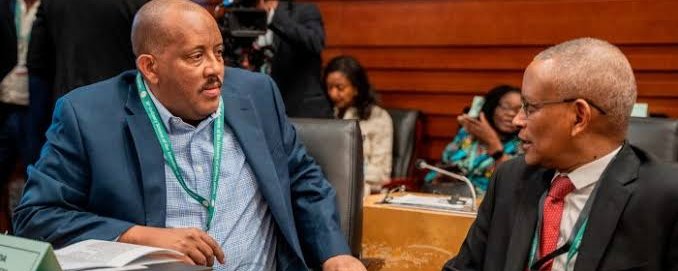The Tigray war, which was a genocidal war waged by the Ethiopian and Eritrean governments, represents one of the gravest humanitarian crises and violations of international laws in the modern era, defined not only by the scale of violence but also by its deeply gendered dimensions. More than 600,000 civilians perished and close to 3 millions were displaced. Women and girls in Tigray have been targeted with heinous acts of sexual violence, including rape, mutilation, and forced sterilization. The Tigray government estimates that at least 120,000 women and girls were impacted. This number is likely underreported as many survivors do not share these crimes. Further, there are areas forcefully and illegally occupied by Amhara and Eritrean forces where the victims are not captured in these numbers. Across Tigray, the perpetration of conflict-related sexual violence (CRSV) was part of a larger strategy in which sexual violence was used as an instrument of warfare to systematically target Tigrayans and destroy the region’s social fabric. These atrocities are compounded by systematic displacement and lack of access to care and psychosocial support, which continue to strip women of safety, stability, and the ability to protect their families. The deliberate weaponization of starvation and the blockade of humanitarian aid further entrench their suffering. Furthermore, Eritrea’s and the Amhara region’s occupation of Tigrayan territories exacerbates the crisis, with daily occurrences of human rights violations, including sexual violence. This is despite the provisions for the withdrawal of non-federal forces from Tigray according to the Nairobi Declaration (Article 2.1 (d)).The international community’s response, however, remains inadequate, with delayed interventions and failure to address the urgent needs of survivors and hold perpetrators accountable. This article seeks to serve as a call to action by highlighting the scale of the CRSV in Tigray and describe its nature, while summarizing the international community’s response or lack thereof.
Weaponized Rape
Weaponized rape, a deliberate strategy of terror and control, was a defining characteristic of the genocidal war in Tigray. Books such as Tearing the Body, Breaking the Spirit by Birhan Gebrekristos and Mulu Mesfin as well as In Plain Sight by Rita Kahsay et al. extensively document cases of weaponized rape. Women and girls were subjected to systematic sexual violence intended not only to inflict physical and psychological harm but also to exert dominance over the Tigrayan community. Documented reports from survivors and organizations, such as the Tigray Genocide Commission of Inquiry, detail horrific acts, including gang rape, sexual mutilation, sexual slavery, which often included debilitating acts of violence such as insertion of foreign objects into women’s and girls’ genitals, which have left devastating, long-term impacts on survivors and communities. Testimonies from survivors, as well as insights from experts such as Yirgalem of the Gender-Based Violence (GBV) unit of the Tigray Genocide Commission of Inquiry underscore the systematic and deliberate nature of these atrocities.
The scale of the violence is staggering, with 52.9% of reported incidents of sexual violence involving rape and over 80% involving gang rape, according to the Tigray Genocide Commission of Inquiry. Such statistics highlight the widespread and systematic nature of the violence in the war. These acts, perpetrated by Ethiopian, Eritrean, Amhara and Afar forces, represent a deliberate campaign to terrorize and destabilize the Tigrayan population. Perpetrators used ethnic slurs and proclaimed their goal to “pollute Tigrayan bloodlines.” The acts of violence that accompanied many of the sexual assaults had the intent of preventing Tigrayan women’s ability to bear children. These acts of violence impacted hundreds of thousands of women.
Reinforcing Inequalities
This campaign of sexual violence was not only an instrument of terror but also a tool of broader socio-economic devastation. The physical and psychological scars left on survivors are compounded by the destruction of essential services and infrastructure, deepening their vulnerability. As the war raged on, the deliberate targeting of Tigray’s economic and social foundations ensured that women, already facing the burden of trauma, would also bear the brunt of economic deprivation and societal collapse. This was further compounded by the destruction of healthcare facilities.
The genocidal war further exacerbated existing inequalities, reinforcing patriarchal structures. Women face disproportionate challenges due to the intentional destruction of infrastructure and livelihoods by the Ethiopian government and its allies. The Ethiopian government blockaded Tigray for several years. As I outlined elsewhere, banks were shut down, budgetary allocations frozen, and communications severed, effectively isolating Tigray from the rest of the country and the international community. This, in addition to causing isolation, was done to destroy the economy. In fact, key figures aligned with the genocidal regime pompously made statements about successfully returning Tigray’s economy to what it was 30 years before, to shambles.
The genocidal war has also eroded progress toward gender equality, impacting women disproportionately. Schools have been destroyed or repurposed. According to an IDP I spoke with and other sources, some schools are used to shelter the internally displaced within Tigray. Further, according to the internally displaced person, 70-80 students are placed in one classroom, leading to overcrowding, which discourages attendance. The loss of educational opportunities, disproportionately affecting girls, not only limits their individual potential but also undermines the region’s future development and economic stability. These barriers reflect a broader assault on women’s rights.
Survivors also face enduring physical and psychological trauma, compounded by the collapse of healthcare systems that once offered maternal care, psychological support, and reproductive health services. According to a nurse at Ayder Comprehensive Hospital in Mekelle, Tigray, the stigma associated with weaponized rape further isolates survivors, preventing them from seeking help and perpetuating cycles of silence and neglect. As the impact of weaponized rape ripples through families and communities, it leaves a legacy of a broken social fabric that will take generations to mend.
Response by the International Community
In response to the widespread human rights abuses in Ethiopia, the International Commission of Human Rights on Ethiopia (ICHREE) was established by the United Nations Human Rights Council (HRC) in December 2021. The commission’s mandate was to investigate reported atrocity crimes and to lay the foundation for future justice and accountability efforts. Based in Entebbe, Uganda, ICHREE was tasked with conducting a thorough investigation into human rights violations in Ethiopia since the war began in November 2020. Its focus included violations of international human rights law, humanitarian law, and refugee law, while paying particular attention to gender-based violence and other violations that disproportionately affect women and girls in the conflict zones.
Although the ICHREE was disbanded, its second report illuminated the horrors faced by women and girls in Tigray, identifying widespread sexual violence and gender-based crimes as part of the strategy of the Ethiopian government and its allies. The commission documented incidents of sexual slavery, physical abuse, and other forms of violence, with various armed groups implicated in these heinous acts. The victims of these crimes included pregnant women and women and girls of all ages, often subjected to violence in front of their children or family members, compounding the psychological trauma.
The international community has condemned these acts of violence against women and girls during armed conflict, recognizing them as serious violations of international human rights law. Under the Geneva Conventions and their Additional Protocols, sexual violence in conflict is classified as a war crime, a crime against humanity, and, in some cases, an act of genocide. Perpetrators of such violence can be held accountable under international law, particularly if the crimes are part of a broader, systematic attack against civilians. This is intended to ensure that military and political leaders can be held accountable for crimes committed by their subordinates, providing a path for justice for the victims of these brutal acts.
The U.S. government, in particular, has previously expressed deep concern over the war and human rights violations in Tigray. Citing specific issues such as extrajudicial killings, rape, and torture, the U.S. decided to suspend Ethiopia’s benefits under the African Growth and Opportunity Act (AGOA). The suspension of AGOA benefits was a significant step, signaling the need for stronger international pressure on Ethiopia to ensure accountability for human rights violations, and pursue peace in the region. International accountability for these crimes is essential to ensure justice for the victims but has yet to occur in a way that is reflective of the extent of the crimes committed.
The Need for International Action
The response of the international community has been slow and inadequate. Integrating gendered perspectives into conflict analysis and interventions remains a critical step towards ensuring the needs of the survivors are met and justice is served for the women and girls. The sexual violence in Tigray, specifically the weaponized rape, emphasizes the importance of considering the gendered dimensions of war. Without acknowledging and addressing this dimension, peacebuilding and justice efforts will fall short, leaving the specific needs of women and girls unmet.
Weaponized rape is a violation of international law, demanding urgent global attention. The deliberate targeting of women as a means of terror and control reveals the gendered dimension of this genocidal campaign. As such, holding perpetrators accountable for these crimes is essential to any meaningful resolution of the war. Ending impunity for these heinous crimes and addressing the genocidal nature of gender-based violence in Tigray is critical to achieving lasting peace and stability in the region. Human rights organizations, in collaboration with international bodies, should work to ensure that all perpetrators are held accountable for these violations. The failure to address these atrocities not only perpetuates impunity for perpetrators but also undermines efforts toward peace and reconciliation. Global intervention is necessary to hold the Ethiopian government, as well as other forces involved, accountable for these heinous violations. It is through this accountability that survivors may begin to rebuild their lives and communities may find the path to healing.
The humanitarian response must also urgently address the needs of survivors and vulnerable populations. For women, establishing safe spaces in displacement camps, access to female healthcare providers, and robust mechanisms for reporting abuse are essential. Girls, who face disrupted education, malnutrition, and psychological trauma, require access to education, nutrition programs, and specialized mental health services. Elderly women, often overlooked, need targeted interventions like accessible healthcare and improved sanitation facilities. A comprehensive and inclusive approach is vital to mitigate the far-reaching impacts of this genocidal war. The international community must channel this support through local civil society organizations to prevent abuse by the Federal government.
Survivors must be supported through legal, medical, and psychological means, and access to justice remains a crucial aspect of the healing process. By strengthening legal frameworks, providing survivor support, and ensuring international oversight, we can begin to address the violations in Tigray and beyond, working toward a future where women’s rights to safety, justice, and equality are upheld.
Batseba Seifu – Omna Tigray External Contributor, March 2025









